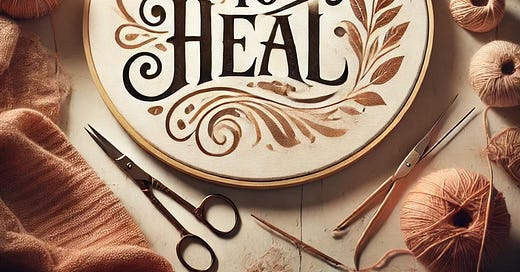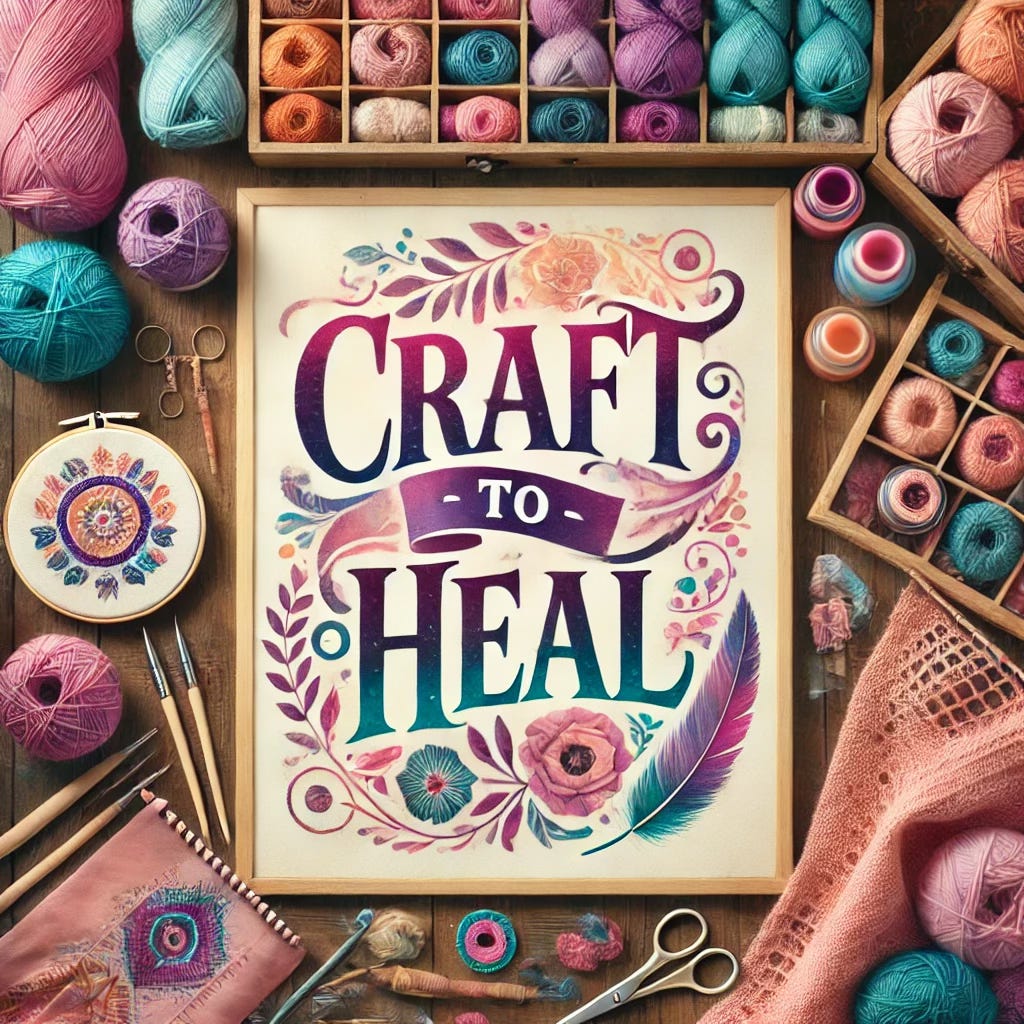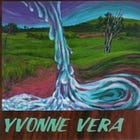Crafting in a Time of Upheaval: Creativity as Restoration, Rejuvenation and Resistance
How Fiber Arts Can Anchor Us, Connect Us, and Empower Us in Difficult Times
I have a really difficult time keeping up with the news. It’s not that I don’t want to be informed - I do, obviously. I care deeply about what’s happening in the world, about injustice, about the ways we are all interconnected. Maybe too deeply sometimes - the weight of it all, the endless churn of crisis after crisis, can feel overwhelming. It intersects with my own experiences of depression in ways that I have to be mindful of. If I consume it too reactively or mindlessly, it seeps into every corner of my being, making it harder to function, to create, to show up in the ways I want to.
So I’ve learned to titrate my intake, to take in the news intentionally rather than as a passive observer. I give myself permission to engage in ways that are sustainable - to read when I am mentally prepared (and never to watch/listen, only to read), to step away when I need to, to be gentle with myself regarding what I need and to offset the weight of it all with healing actions. I lean into practices that restore me, both individually and in community. And more and more, I find myself returning to craft, the thing that has been saving my life for decades.
This isn’t about escapism, per se. It’s about staying present while also staying well. Craft has always been more than just a hobby for me. It is a way to ground myself, to process emotions too big for words, to rebuild something tangible when the world feels like it’s falling apart. And craft doesn’t just heal the individual - it ripples outward. It connects us. It has been a tool of resistance, resilience, and solidarity throughout history.
The Craft to Heal workshop series is a journey through this idea. We begin by centering ourselves - learning to use craft as a personal tool for mindfulness and healing. Then we explore how craft can strengthen relationships, create community, and ultimately contribute to something greater than ourselves. This is about finding ways to craft with intention - whether that means creating for joy, for connection, for activism, or for collective healing.

Craft as Restoration: Creating Stability in Unstable Times
When the world feels chaotic, creativity gives us something to hold onto. The simple act of stitching, weaving, knitting, sewing, quilting - or whatever craft speaks to you -can offer a moment of stillness. It allows us to pause, breathe, and process emotions that otherwise have no place to land.
Restoration is about returning to yourself, finding solid ground, and creating a sense of stability even when external forces feel uncertain. Craft does that by:
Engaging the senses, giving the mind something rhythmic and tangible to focus on.
Activating the nervous system’s relaxation response, helping to lower stress levels and ease tension.
Allowing time for integration, helping us sit with complex emotions rather than being consumed by them.
In times of personal, national, or global crisis, having a creative practice that is both familiar and accessible can be a lifeline. When everything feels uncertain, the act of making something stitch by stitch, row by row, reminds us that we can build something beautiful even in the midst of hardship.
Craft as Rejuvenation: Reclaiming Energy and Agency Through Making
Restoration is about grounding; rejuvenation is about renewal. Once we have re-centered ourselves, craft becomes a way to actively replenish our energy and sense of purpose. It shifts us from passively absorbing the stress of the world to actively engaging with creativity in a way that fuels us.
Craft as rejuvenation helps us:
Rebuild our sense of agency. When so much feels out of our control, creating something with our hands reminds us that we do have power - to shape, to mend, to construct something meaningful.
Bring joy into difficult times. Making, even in small ways, taps into the simple pleasure of creativity. It can be playful, expressive, and life-affirming.
Engage in slow, intentional time. In contrast to the fast, overwhelming cycles of crisis and reaction, craft exists at its own pace. It gives us permission to step outside of urgency and exist in the moment.
Rejuvenation is about refilling the well (so to speak, a la Julia Cameron) not just so we can survive - but so that we can thrive and help others around us thrive as well. It’s about remembering that creativity is an act of self-sustenance. And when we sustain ourselves, we are better equipped to sustain our communities.

Craft as Community: Weaving Connection Through Handmade Work
Beyond the personal, craft connects us to others.
A handmade item given as a gift strengthens relationships.
A craft circle provides support and solidarity.
Teaching someone to stitch, knit, quilt, or weave passes down not just skills, but stories and traditions.
Craft has always been a tool for gathering people together. Before social media and mass communication, quilting bees, sewing circles, and knitting groups were spaces where people, often women, exchanged ideas, processed world events, and strengthened their communities.
Today, this tradition continues in new ways. People make prayer shawls for the grieving, hats for newborns, quilts for refugees, blankets for shelters, and protest banners for movements. Making with our hands has never been separate from making a difference.
Craft as Resistance: A History of Handmade Activism
Throughout history, craft has been used as a form of resistance, storytelling, and activism—especially by women and marginalized communities. Consider:
Quilts in the Underground Railroad: Some historians suggest that quilt codes helped guide enslaved people to freedom, embedding secret messages within patterns.
Suffragette Banners: Women’s suffragette movements used hand-sewn banners to amplify their voices in public protests, reclaiming the domestic arts as political tools.
The AIDS Memorial Quilt: This is still the largest community art project in history, made up of thousands of hand-sewn panels, each honoring a life lost to AIDS.
Recent Craftivism: The modern movement of crafting for social justice, from the pink “Pussyhats” of the Women’s March to the Liberty Crochet Mural.
Fiber arts, historically dismissed as “women’s work” or “domestic crafts,” have always carried power. These were not just practical skills - they were cultural narratives, acts of defiance, and tools for change.
By continuing these traditions, we honor those who came before us and recognize that making with intention can be a way of participating in the world, not withdrawing from it.
Craft to Heal: From Self to Community to Global Impact
I have designed the year-long Craft to Heal journey to take us through a full spectrum of creative transformation - from personal grounding to community connection to crafting for collective change.
First, we center ourselves. Before we can use craft to impact the world around us, we must first learn how to use it as a tool for our own grounding, mindfulness, and self-care. In this opening workshop, we’ll explore how making - even in small, mindful moments - can restore us, reconnect us with our creative identity, and provide the stability we need to move forward.
Next, we explore how craft strengthens relationships. In the coming months, we’ll dive into how making can foster deeper connections - how crafting together builds community, how handmade gifts carry meaning, and how creative collaboration strengthens relationships.
Finally, we expand outward. As the journey unfolds, we’ll look at the ways craft has been used throughout history to create change, and we’ll explore how we can each contribute - to causes, communities, and a world that is constantly in need of healing.
Before we can move outward, we must begin with ourselves.
That’s why the first workshop is foundational - it’s where we lay the groundwork for everything that follows. It’s where we begin to reclaim creativity as something essential, not optional.
The workshop takes place on March 18th, 2025 on Zoom and you are able to receive the recorded Zoom video even if you aren’t able to attend as long as you sign up in advance.
This first workshop is where we begin the process of crafting with intention. It’s where we set the foundation for a practice that will support us personally, relationally, and globally.
Making something with your hands may not seem like a revolutionary act. But history - and lived experience - tells us otherwise.
Your craft has power. How will you use it?
The Craft to Heal workshop series can help you make decisions about that.
Sign up for all 12 months of Craft to Heal here.








